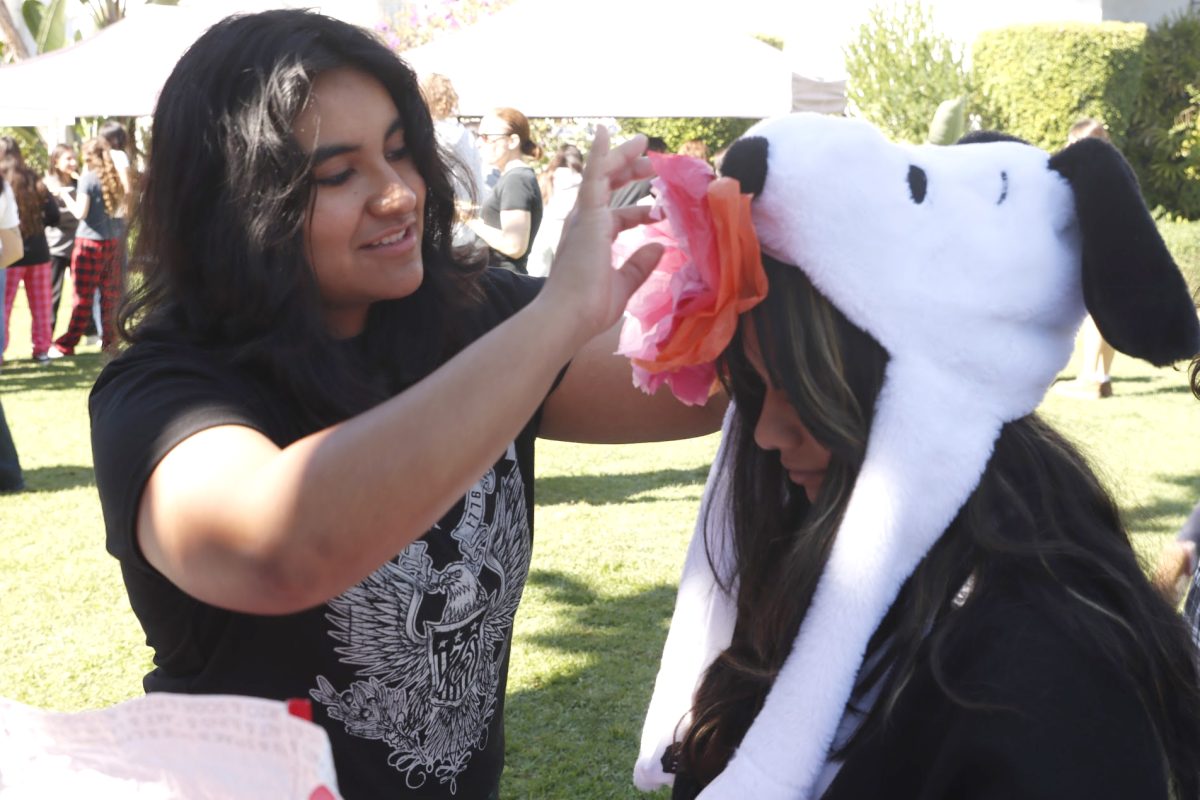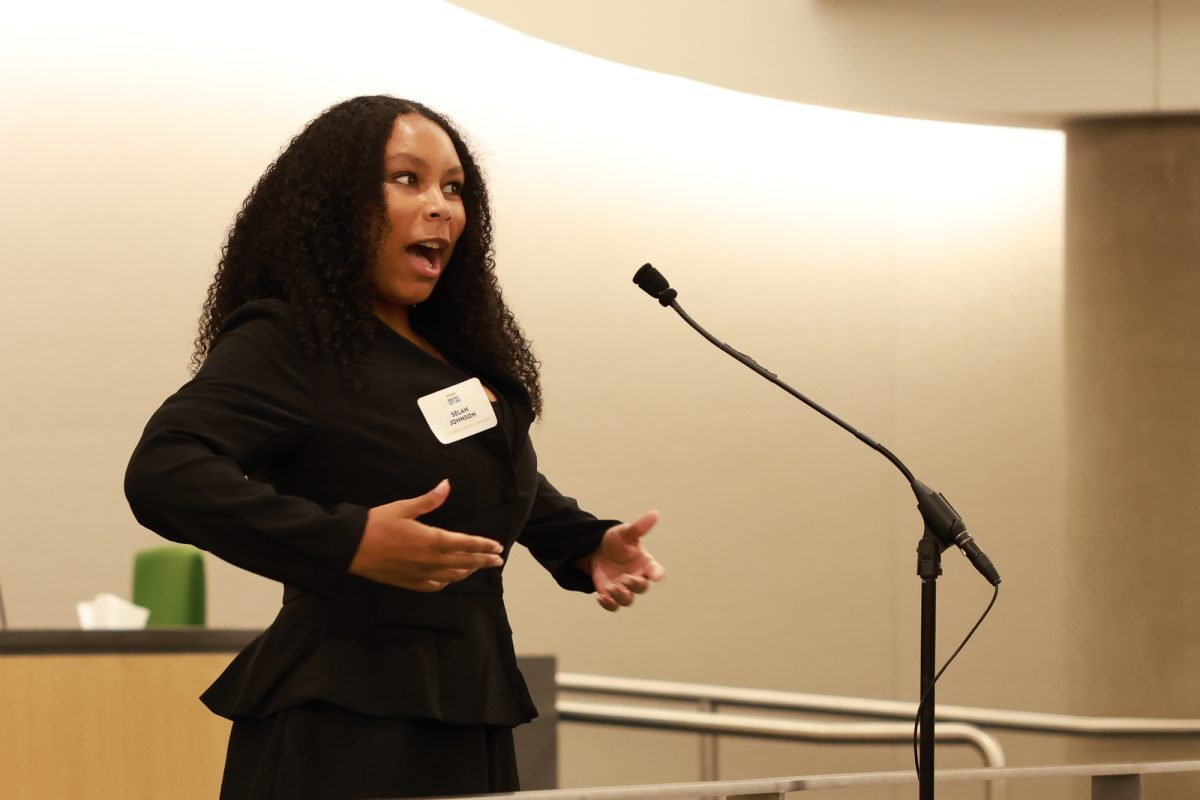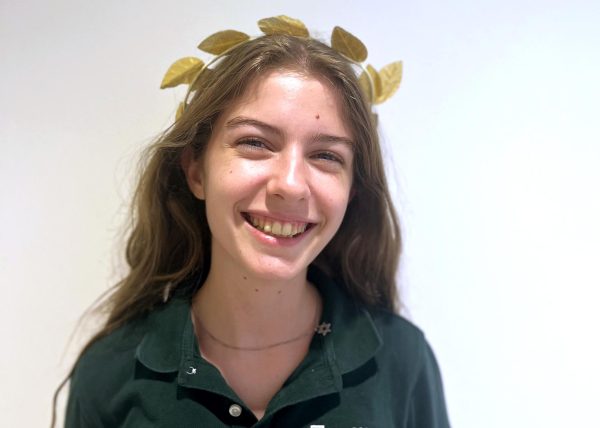The day after Halloween, the courtyard was filled with color and commotion as students ate pan de muerto, crafted paper flowers, watched Disney’s “Coco” and applied temporary glitter tattoos. Through these activities, students and faculty celebrated Día de Los Muertos Friday, Nov. 1.
Día de Los Muertos is an annual Latine holiday observed from Nov. 1-2, focused on remembering and celebrating loved ones who have passed away. People across many countries celebrate this holiday with a diverse array of traditions.
Junior Belén Haro said many people make ofrendas, or altars, to commemorate their family and friends. She said her family’s ofrendas hold items of significance to her deceased family members, such as books and beverages they enjoyed, in addition to traditional decorations of marigolds and calaveras, or candy skulls. For many years, Archer has created and decorated a community ofrenda near the Eastern Star Gallery to celebrate the holiday where community members can write cards to loved ones.
“I’m a personal believer that culture should be shared. I think that by allowing everyone to be introduced to this experience of making an ofrenda brings communities together,” Haro said. “I think it’s quite beautiful that … students that are not descendants of Latino culture also can participate in this wonderful holiday.”
Hermanas Unidas Executive Board Member Danilka Foronda Zanipatin (’25) said she believes many people only know about Mexican celebrations of Día de Los Muertos. For this reason, Foronda Zanipatin said she especially appreciated Spanish teachers Mark Forte and Talia Geffen’s educational presentation to the school, during which they shared some of the traditions of El Salvador’s All Souls Day, which takes place every Nov. 2.
“As someone who is El Salvadorian, Ecuadorian and Bolivian — there’s a wide variety in our culture. It’s not just one single country that represents the whole culture. There’s many countries in the Caribbean, Central America [and] South America, who do celebrate this holiday,” Foronda Zanipatin said. “Although it isn’t exactly called Día de los Muertos, they have similar traditions that celebrate the passing of loved ones.”
Along with remembering her family, Haro said celebrating Día de Los Muertos allows her to deconstruct the negative connotation surrounding death that Spanish colonizers forced on Aztec civilizations.
“Día de Los Muertos contradicts that [negative association] and allows us to see death as what originally our ancestors thought of it as — more of a joyous experience,” Haro said.
In addition to celebrating at school on Nov. 1, many students learn about Día de Los Muertos in Spanish classes. Senior Ivy Woolenberg has been learning Spanish at Archer since seventh grade and said she was first taught about the holiday in middle school.
“Especially in learning a language, it’s important not just to study the language and the grammar and learn how to speak it, but to learn about different parts of the culture,” Woolenberg said.
Haro said Archer’s Día de Los Muertos also helps students continue to learn about the world around them. She said this perspective helps them not just in classes, but also as they go through the world.
“It’s important to learn not only about my culture,” said Haro, “but about everyone’s culture, because I think we can better understand individuals as people and … how they think, and how it shapes how we live our everyday lives.”
Additional reporting conducted by Outreach Editor Sydney Tilles (’26).









![Faculty and students play in the Color Clash rematch March 20. Danilka Foranda-Zanipatin ('25) plays for the senior team. “Just to have some time deticated to just being supported by [a] large community… it’s just nice to have a little distraction.”](https://archeroracle.org/wp-content/uploads/2025/03/Screenshot-2025-03-20-at-4.12.21 PM.png)

